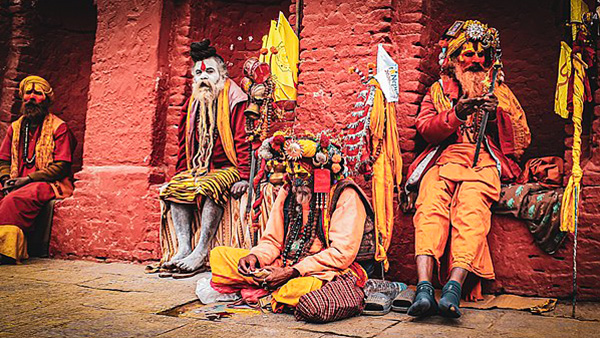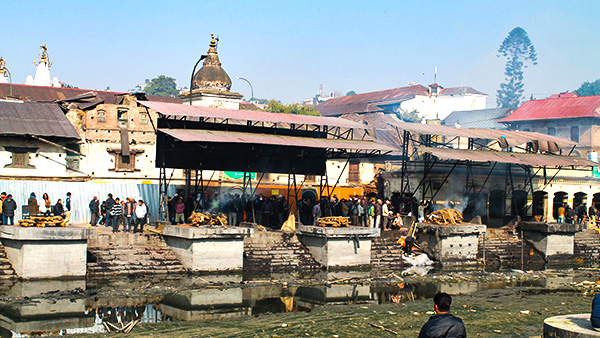Just In
- 2 hrs ago

- 3 hrs ago

- 5 hrs ago

- 6 hrs ago

Don't Miss
- Technology
 OnePlus Watch 2 New Nordic Blue Colour Option Launched; Here’s How Much It Costs
OnePlus Watch 2 New Nordic Blue Colour Option Launched; Here’s How Much It Costs - News
 EC Takes Action Against PM Modi, Rahul Gandhi For MCC Violations
EC Takes Action Against PM Modi, Rahul Gandhi For MCC Violations - Sports
 T20 World Cup 2024: Not Kohli or Rohit! These two players are certain to be in the India Squad, says ex-India player
T20 World Cup 2024: Not Kohli or Rohit! These two players are certain to be in the India Squad, says ex-India player - Finance
 1:10 Split, Rs 147/Share Dividend: FMCG Major Likely To Report Profit Growth; Buy Or Sell?
1:10 Split, Rs 147/Share Dividend: FMCG Major Likely To Report Profit Growth; Buy Or Sell? - Automobiles
 2024 Jeep Wrangler Facelift Launched In India - Prices Start At Rs 67.65 Lakhs
2024 Jeep Wrangler Facelift Launched In India - Prices Start At Rs 67.65 Lakhs - Movies
 Supriya Menon’s Heartfelt Anniversary Post For Husband Prithviraj Sukumaran: 13 Years With You! Wow!
Supriya Menon’s Heartfelt Anniversary Post For Husband Prithviraj Sukumaran: 13 Years With You! Wow! - Education
 UPSC CAPF 2024 registration begins; Apply online for 506 Assistant Commandant posts, Know more
UPSC CAPF 2024 registration begins; Apply online for 506 Assistant Commandant posts, Know more - Travel
 Escape to Kalimpong, Gangtok, and Darjeeling with IRCTC's Tour Package; Check Itinerary
Escape to Kalimpong, Gangtok, and Darjeeling with IRCTC's Tour Package; Check Itinerary
Pashupatinath Temple: Know About The History, Story, Rituals, Timings, And Architecture
Located on both banks of Bagmati River on the eastern outskirts of Kathmandu, Nepal in the sprawling brick red campus of Lord Pashupatinath's temple attunes you to its aura as soon as you step into its premises.

According to Skanda Purana, when Goddess Parvati, inquires Lord Shiva about the most significant Shiva temples, he informs her about the existence of 68 Shiva temples spread acrosss Nepal in India and the Pashupati nath temple is one amongst those temples. It is one of those few temples that survived a natural disaster of earthquake and still remained strong.
Once upon a time, Lord Shiva and Goddess Parvati were strolling in the valley disguised as deers. The Devas captured him and caught him by his horn which broke into a form of Shiva Linga. Since Lord Shiva appeared in an animal form, he was named as Pashupatinath (Lord of the animals). Let us read further to know about its interesting facets.
Architecture
Built on an area of 1.58 acres of land, the main temple complex houses more than 500 small temples, pavilions, ashrams, and living quarters. The main temple is a structure with a bunk roof and a golden spire. This pagoda style construction has a shining gilded roof from which a golden spire called Gajur rises up towards the sky. It is a cubic construction with four main doors, that three of which are made in silver and one of them in gold. The copper roof is two storied and covered with gold.
Wooden sculptures and ornate decorations are the main features of this temple, amongst which the huge golden statue of Nandi, Lord Shiva's bull, enchants the senses with its huge dimensions and golden glow. Foreigners are not allowed inside the main temple. The western bank also is known for the Panch Deval complex (five temples) which once upon a time, was a regular temple but now shelters and serves the poor and destitute. Numerous stone temples for Lord Shiva, mostly small single storied, are located on the eastern bank of Baghmati.

Visitors
Mainly this temple is visited by the elderly citizens for different reasons. They arrive here seeking shelter to spend the last days of their lives, to be cremated on the Baghmati River banks, so that their ashes flowing along the currents of Baghmati river would finally meet the Ganges.
Indian and Nepali elderly Hindus arrive here in flocks every year . It is believed that those who breathe their last at Pashupathinath Temple are never reborn as a human, and get rid of from the cycle of birth and death. They can finally acheive moksha or salvation.
Along the right bank of the Baghmati river, one can find numerous funeral platforms to cremate those visitors who die here, of old age and sickness. Tourists get at least one chance to see an open-air cremation. Also, local women in this area wash their clothes in the downstreams of the Bagmati as the waters here contain animal fat from the cremated ashes, that can easily wash off the dirt from the clothes.
Priests From Karnataka
Surprisingly, a team of five priests, trained in Dakshinamnaya Mutt in Sringeri, and Udupi, from the coastal region of Karnataka, are entrusted the task of worshipping Lord Pashupatinath. Extremely well versed in Rigvedic traditions, Pashupata yoga, Shaivagamas, and Sama veda, these priests are well trained to carry out the ritualistic art of worship.
Although there is no discernible historical background associated with this, but, it is believed that, 300 years ago, during the reign of Saint Shankaracharya, the King of Nepal; Yaksha Malla, was unable to withstand the tantric practices going on in this temple, and therefore, entrusted five priests from Karnataka to continue the puja to Lord Pahsupatinath.

Puja Rituals
The outer perimeter of this temple during the evenings gets busy with the swarm of pigeons fluttering their way down to the courtyard. It serves as an additional reminder to the devotees to catch a glimpse of the Lord during the evening Aarti and prayers. Just facing one of the four front doors of the temple, is the Sanctum of Lord Ganesha who receives the first worship from the devotees. Then the silver door of the sanctum of Lord Pashupati nath opens for the evening puja. Once the pujas conclude, the chief priest in saffron robes comes out of the temple, escorted by the Nepal police.
Monkeys and deers, wander all over the place without a trace of fear. It is common to meet wandering yogis, in their specific attire, who are trying to acquire liberation from the cycle of death and rebirth by meditating. They live in caves and live an extremely ascetic life.
UNESCO Heritage Site
This 5th century temple joined the UNESCO's World Heritage Sites List in 1979 as as a part of 7 monument groups across 3 cities in Nepal - Kathmandu, Patan, and Bhaktapur. The exact date of construction is not yet recorded, although some date it back to 5th century, whereas others say that it existed 39 generations before the reign of King Manadeva (464-504 CE). Current construction is dated back to 1692.
Disclaimer: The information is based on assumptions and information available on the internet and the accuracy or reliability is not guaranteed. Boldsky does not confirm any inputs or information related to the article and our only purpose is to deliver information. Kindly consult the concerned expert before practising or implementing any information and assumption.
Image sources: Wikimedia Commons
-
 yoga spiritualityThrissur Pooram 2024: Date, Time, History, Significance, And Celebrations Related To Kerala's Rich Traditions
yoga spiritualityThrissur Pooram 2024: Date, Time, History, Significance, And Celebrations Related To Kerala's Rich Traditions -
 yoga spiritualityKamada Ekadashi 2024 Wishes: Greetings, Messages, Texts, Images, Twitter Status And Instagram Captions
yoga spiritualityKamada Ekadashi 2024 Wishes: Greetings, Messages, Texts, Images, Twitter Status And Instagram Captions -
 yoga spiritualityChaitra Navratri 2024 Day 9: Maa Siddhidatri Puja Vidhi, Vrat Katha, Mantra, And Aarti Lyrics
yoga spiritualityChaitra Navratri 2024 Day 9: Maa Siddhidatri Puja Vidhi, Vrat Katha, Mantra, And Aarti Lyrics -
 yoga spiritualityKamada Ekadashi 2024 Mantras To Chant On This Auspicious Day To Fulfill Desires
yoga spiritualityKamada Ekadashi 2024 Mantras To Chant On This Auspicious Day To Fulfill Desires -
 yoga spiritualityChaitra Navratri 2024 Day 8: Maa Mahagauri Puja Vidhi, Vrat Katha, Mantra, And Aarti Lyrics
yoga spiritualityChaitra Navratri 2024 Day 8: Maa Mahagauri Puja Vidhi, Vrat Katha, Mantra, And Aarti Lyrics -
 yoga spiritualityChaitra Durga Ashtami 2024 Wishes, Greetings, Messages, Images, Posters, Twitter, And Instagram Status
yoga spiritualityChaitra Durga Ashtami 2024 Wishes, Greetings, Messages, Images, Posters, Twitter, And Instagram Status -
 astrologyRam Navami 2024: Lucky Zodiac Signs Who Will Get Special Blessings Of Lord Rama And Will Be More Fortunate
astrologyRam Navami 2024: Lucky Zodiac Signs Who Will Get Special Blessings Of Lord Rama And Will Be More Fortunate -
 yoga spiritualityWhen Is Kamada Ekadashi 2024? Confirmed Date, Puja Rituals, Why Fasting Is Significant On This Day
yoga spiritualityWhen Is Kamada Ekadashi 2024? Confirmed Date, Puja Rituals, Why Fasting Is Significant On This Day -
 yoga spiritualityChaitra Navratri 2024 Day 7: Maa Kalratri Puja Vidhi, Vrat Katha, Mantra and Aarti Lyrics
yoga spiritualityChaitra Navratri 2024 Day 7: Maa Kalratri Puja Vidhi, Vrat Katha, Mantra and Aarti Lyrics -
 yoga spiritualityChaitra Navratri 2024 Day 6: Maa Katyayani Puja Vidhi, Vrat Katha, Mantra and Aarti Lyrics
yoga spiritualityChaitra Navratri 2024 Day 6: Maa Katyayani Puja Vidhi, Vrat Katha, Mantra and Aarti Lyrics -
 yoga spiritualityChaiti Chhath Puja 2024 Wishes, Greetings, Texts, Messages, Images, WhatsApp, Twitter And Instagram Status
yoga spiritualityChaiti Chhath Puja 2024 Wishes, Greetings, Texts, Messages, Images, WhatsApp, Twitter And Instagram Status -
 yoga spiritualityChaitra Navratri 2024 Day 5: Maa Skandmata Puja Vidhi, Katha, Mantra And Aarti
yoga spiritualityChaitra Navratri 2024 Day 5: Maa Skandmata Puja Vidhi, Katha, Mantra And Aarti


 Click it and Unblock the Notifications
Click it and Unblock the Notifications



